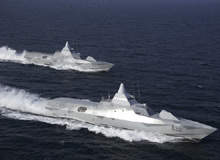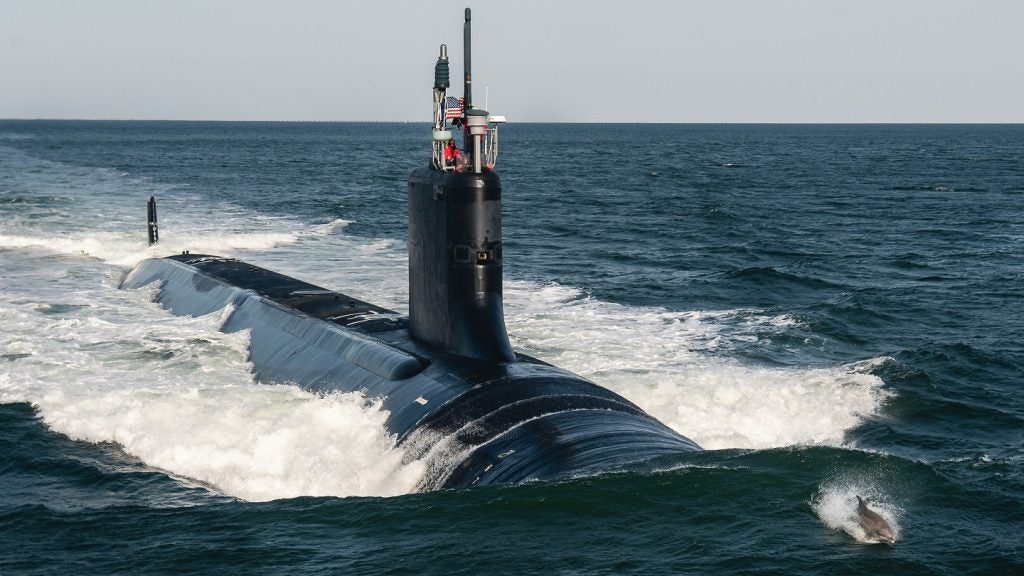
When the first two Visby class corvettes enter service with the Swedish Navy at the end of 2009, they will mark the result of 20 years of naval stealth technology development by the Scandinavian country.
As the first operational stealth ship in the world, the corvettes are designed to be electronically undetectable at more than 13km in rough seas and at more than 22km in calm seas. This is partly thanks to a composite, non-magnetic hull that features large, flat surfaces and sharp edges to lower its acoustic and optical signatures.
The key element in the Visby’s stealth abilities is the use of waterjet propulsion, which was favoured over traditional propellers.
The decision was sparked by a spate of incursions into Sweden’s national waters in the mid-1980s by foreign submarines. This highlighted the need to create an anti-submarine and mine-hunting vessel that could operate close to its shore.
How well do you really know your competitors?
Access the most comprehensive Company Profiles on the market, powered by GlobalData. Save hours of research. Gain competitive edge.

Thank you!
Your download email will arrive shortly
Not ready to buy yet? Download a free sample
We are confident about the unique quality of our Company Profiles. However, we want you to make the most beneficial decision for your business, so we offer a free sample that you can download by submitting the below form
By GlobalDataThis is an area that contains hundreds of islands and archipelagoes that generate a complex underwater hydrological picture while presenting challenges in piloting and navigation, potentially forcing any such craft dangerously close to its quarry.
See Also:
In this cluttered littoral environment the requirement was for a quiet and agile vessel. Patric Hjorth, technical manager at the Swedish Defence Materiel Administration (FMV) the prime contractor for the Visby programme, says: “It’s very hard for a submarine to detect a waterjet vessel. It has a very different signature from a propeller-driven craft as it fades into the background. They’re also very good for making tight turns and fast stops, so they give a lot more manoeuvrability.”
A further reason for using waterjets is to reduce the vessel’s draft in these shallow waters. Early trials suggest that using propellers will increase the draft by up to 0.65m. But it did mean standard hull design was out of the question. “You have to design the hull and stern of a vessel specifically for waterjet propulsion or you won’t get the right water flow to the waterjet inlet – you have to channel the flow to the inlets,” says Hjorth.
Minimising signatures
The plastics and carbon fibre used in the composite hull to give it stealth properties also help to make the craft very lightweight. The Visby displaces 600t of water, about half the weight of a conventional, steel-hulled corvette and this was a design parameter that led to another reason for choosing waterjets.
“The need for agility and a high top speed meant that a light weight was an essential factor throughout the entire programme,” says Hjorth. “You actually need waterjets for these vessels, as they’re more efficient than propellers at high speeds.”
The waterjets themselves, from Rolls-Royce subsidiary Kamewa, are standard 125SII units customised for navy use. They produce a low hydro-acoustic signature in any case – about 10–15dB less than a prop-driven equivalent – but to obtain the even lower signature specified in the design, the impellors use seven blades instead of the usual five and the blades themselves are skewed.
This allowed the main inlet to be light and small with some components being remade in bronze instead of the usual stainless steel to minimise their magnetic signature.
They are driven by a combined diesel or gas – CODOG – system designed for the Visby by its builder, Swedish shipwright Kockums, which consists of two MTU diesel engines and four Verico marine gas turbines.
At low speeds the waterjets are powered by the diesel engines while the turbines are used for higher speeds, which can exceed 35 knots. Power is fed to the waterjets through a pair of gearboxes, with one diesel and two turbines connected to each one. “The gearing had to be specific to the waterjets to allow the Visby to move slowly for hunting submarines or detecting mines, then switch to higher speeds for other roles,” Hjorth explains.
He adds that CODOG was chosen over CODAG (combined diesel and gas) because it allows for a simpler gearing arrangement and therefore does its bit to save weight too. “The choice of power unit and waterjets is governed entirely by the vessel’s operational profile,” he says. Although CODAG is used in similar craft such as the South African Navy’s Valour class of frigates, Hjorth points out its use is more appropriate there because the Valour vessels operate on the open sea and hence tend to operate at intermediate speeds where CODAG propulsion is more efficient.
Multipurpose vessels
Originally there were to have been six Visby corvettes divided into two classes, one for surface combat and the other for submarine hunting and mine detection. However, cutbacks in the early 1990s saw the fleet reduce to five vessels in all and in a single, multifunction class.
As a result, the standard configuration is a mixture of equipment. But, Hjorth says, all is not lost. “Although the vessels can switch from one role to another while out at sea, if needed they can return to port to be refitted with specific modules to optimise them for a particular role.”
There has been a great deal of interest in the Visby from around the world, particularly from the US in relation to its own Littoral Combat Ship programme – the first product being the experimental Sea Fighter that serves as a testbed vessel and is powered by the same Kamewa waterjets as the Visby.
Hjorth admits it is still early days for the Visby and believes potential buyers will wait until the corvettes have run up some operational time before coming forward with orders. Some may view this as ironic as Sweden’s historic neutrality has led to a long tradition of developing its own technology and as such has been pioneering waterjet propulsion since the 1980s, notably in Visby’s predecessors the Göteburg class.
“Waterjet technology has worked brilliantly for us over the years,” says Hjorth. “There has been no giant leap for us with Visby – they were the obvious choice.”







